Message variables are a body of text that you can assign a personalization tag to for use in any campaign email (including those sent from an automation).
They are similar to custom fields, but not the same: Whereas custom fields pull values from contact records, message variables pull one constant value from a single place within ActiveCampaign.
This guide will show you how to create a message variable and provide a couple of use-case scenarios to help you understand how to use them.
Creating Your Message Variables
To access Message Variables, navigate to Campaigns in the left menu then Click “Message Variables.”
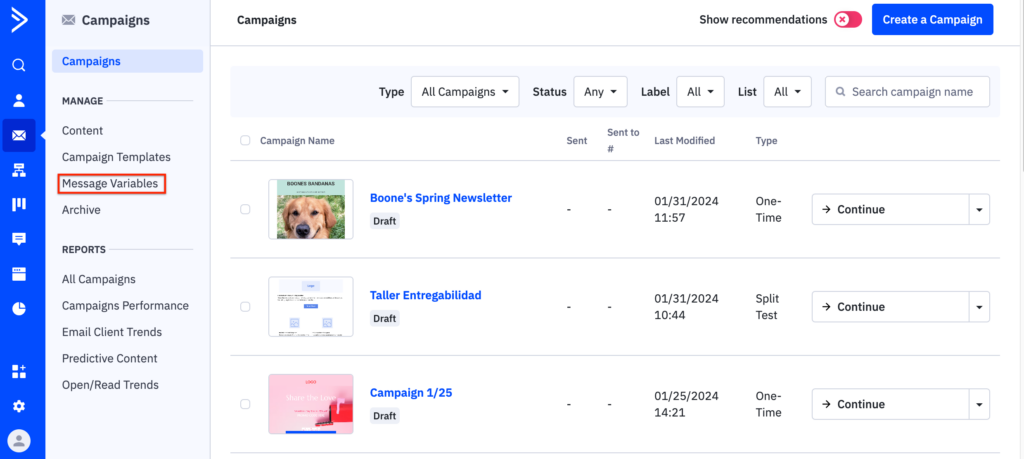
Click the “Add a variable” button to create a new message variable. Begin by giving it a personalization name. This should be a brief, descriptive name to help you recognize your variable. It does not have any bearing on the personalization tag.
Specify a personalization tag. This is the tag you will use in emails to represent your message variable. We recommend making it something you can easily remember so you don’t have to look it up before adding it to a campaign. For instance, if you plan to use your message variable as a signature, you might give it the personalization tag “%MY_SIGNATURE%.”
Select the list or lists to be associated with the message variable. This means that your message variable will be visible only to contacts who are on the list(s) you select here. Hold the CTRL button to select multiple lists.
Note: If a message variable is used in an email and a contact receiving the email is not on the list associated with your message variable, they won’t see anything in its place. We recommend selecting all lists when you create your first message variable, and deselecting lists as you become more confident.
Create your message in the Visual Editor. In addition to text, you can add links and images. If you’re comfortable using HTML, feel free to use the Code Editor for more flexibility and advanced customization options.
Note: The text size that you use here will override whatever text size you use in the rest of your email. Make sure that you use the same font size here that you want to use in the campaign, to ensure a consistent experience for your contacts.
When you’re finished, click the Save button at the bottom to save your new message variable. You’re now ready to use it in a campaign!
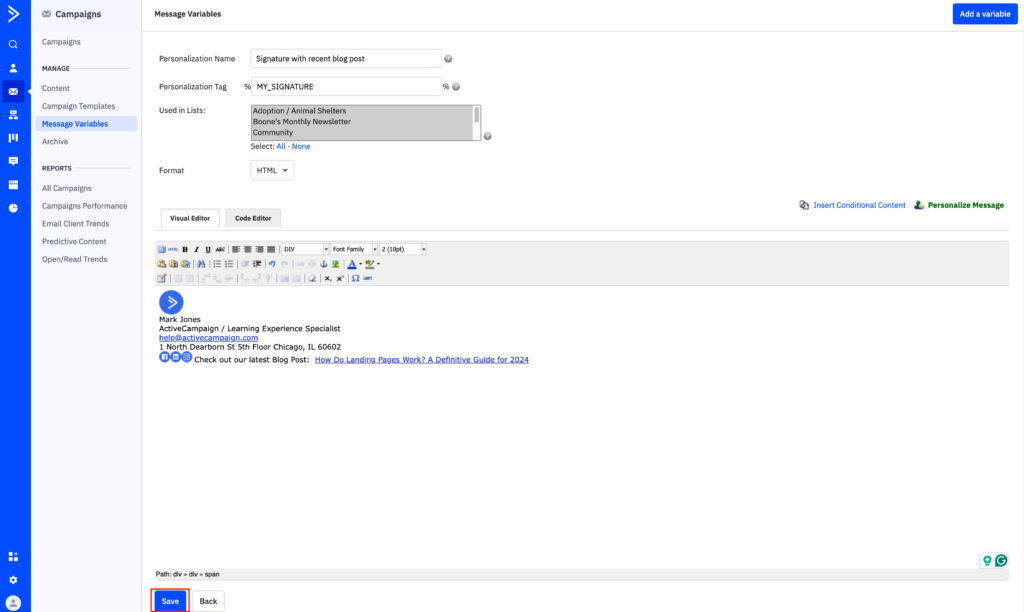
Note: When you create multiple message variables, you’ll be able to see and manage them all from the Message Variables settings page:

For more information on creating message variables, check out our Help Center article.
Use Case: Signature
You can use a message variable to represent your email signature in campaigns, as an added personal touch. Used in this way, a message variable allows you to make updates or edits to your email signature from one centralized location.
Let’s say at the end of your campaign emails, you want to include your signature with a link to your most recent blog post.
So, if you publish a new blog post once a week, rather than going into each campaign template you use to update the blog post link, all you have to do is update the link from Message Variables to have the change reflected in every campaign you send moving forward.
To set up:
Follow the steps described above to create your message variable. For this example, we’ll assume you assign it a personalization tag of %my_signature%.
Once you’ve finished creating your message variable and saved it, navigate back to the Campaigns tab in our top menu and click the New Campaign button to create your new campaign email. When you’re in the email designer, type in or copy and paste “%my_signature%” in a text box where you’d like your signature to appear.
Note: Especially if you’re new to using message variables, you may first want to go to the Message Variables settings and copy the personalization tag for the variable you want to use, to prevent misspellings and misremembered tags.
When you send your campaign, your contacts will see:
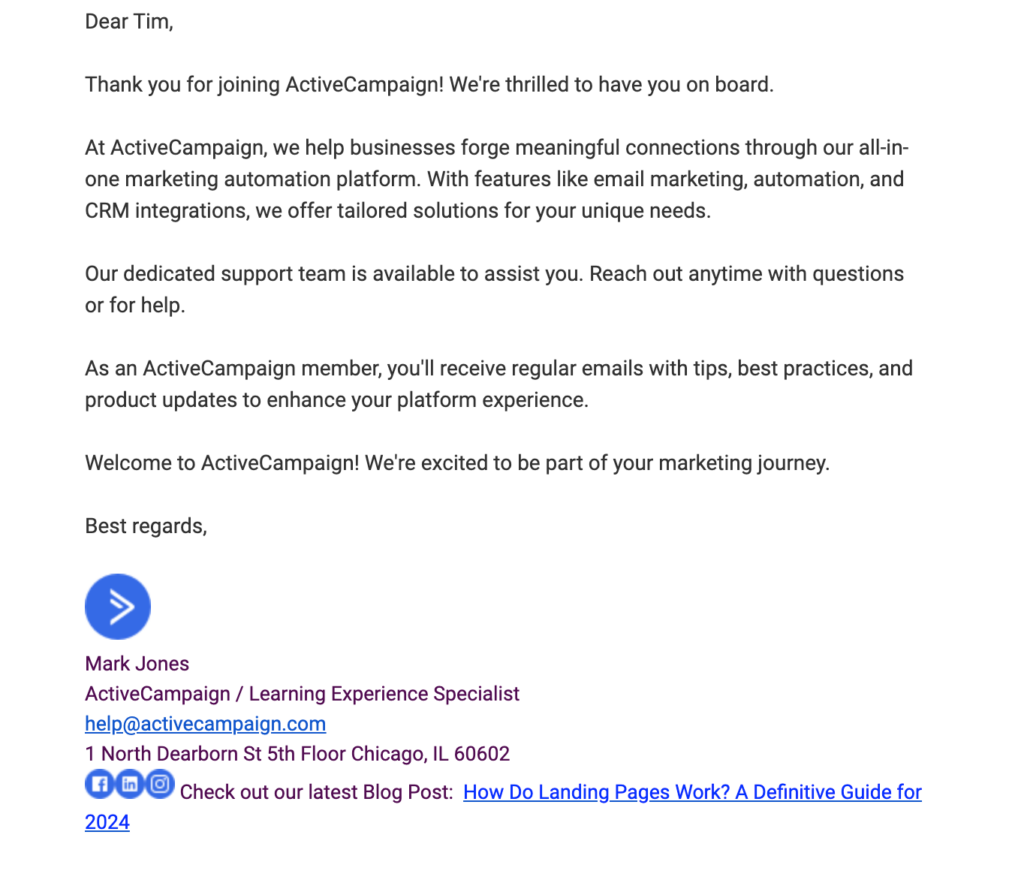
Use Case: Disclaimer
Another way to use message variables is to include disclaimer information at the bottom of your email.
An email disclaimer is a short paragraph included at the bottom of your email to let the recipient of their rights or obligations regarding the information contained in the email.
To set up:
As in the previous example, follow the steps above to create your message variable.
For the purposes of this example, we’ll assume you assign your message variable a personalization tag of %disclaimer%.
Once complete, navigate back to the Campaigns tab in our top menu and click the New Campaign button to create your new campaign email. When you’re in the email designer, add a new text box to the email and type in or copy and paste “%disclaimer%” where you’d like your disclaimer message to appear.
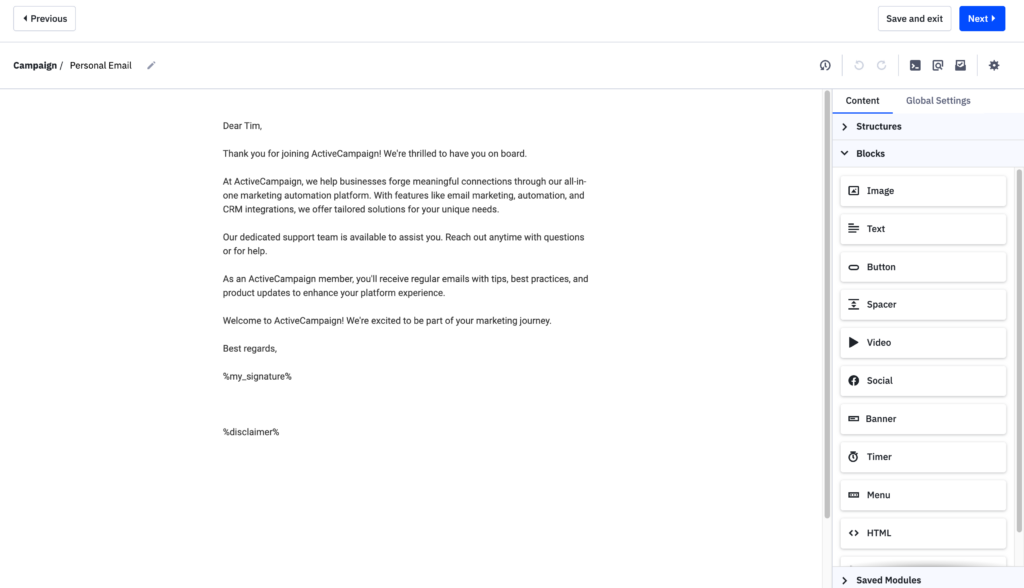
When you send your campaign, your contacts will see:
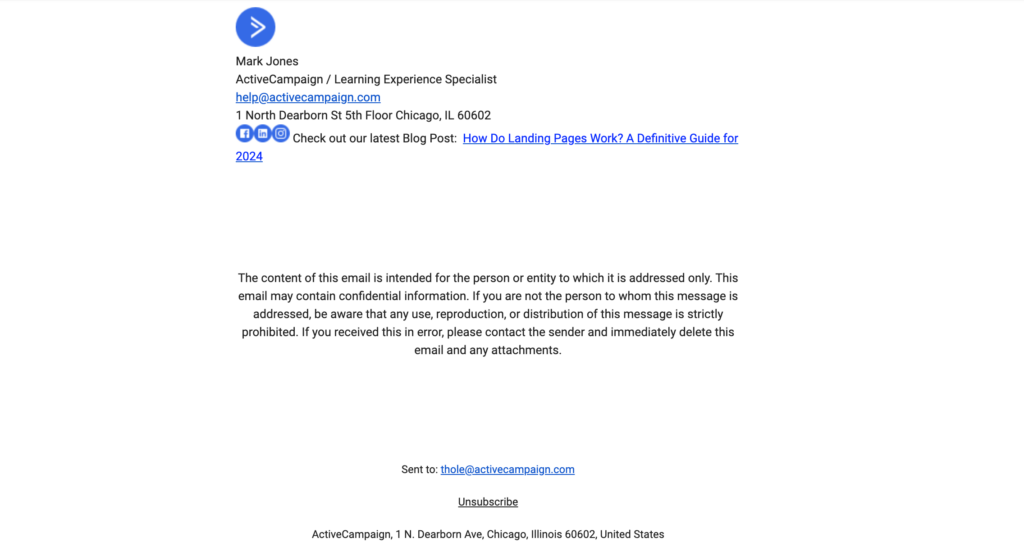
Summary
Different from custom fields, message variables are simple yet powerful tools in your toolbox to help you further personalize your campaigns from one central location within the platform.



